The final week of TED2020 featured conversations with experts on work, tech, government, activism and more, who shared thoughts on how we can build back better after the pandemic. Below, a recap of insights shared throughout the week.
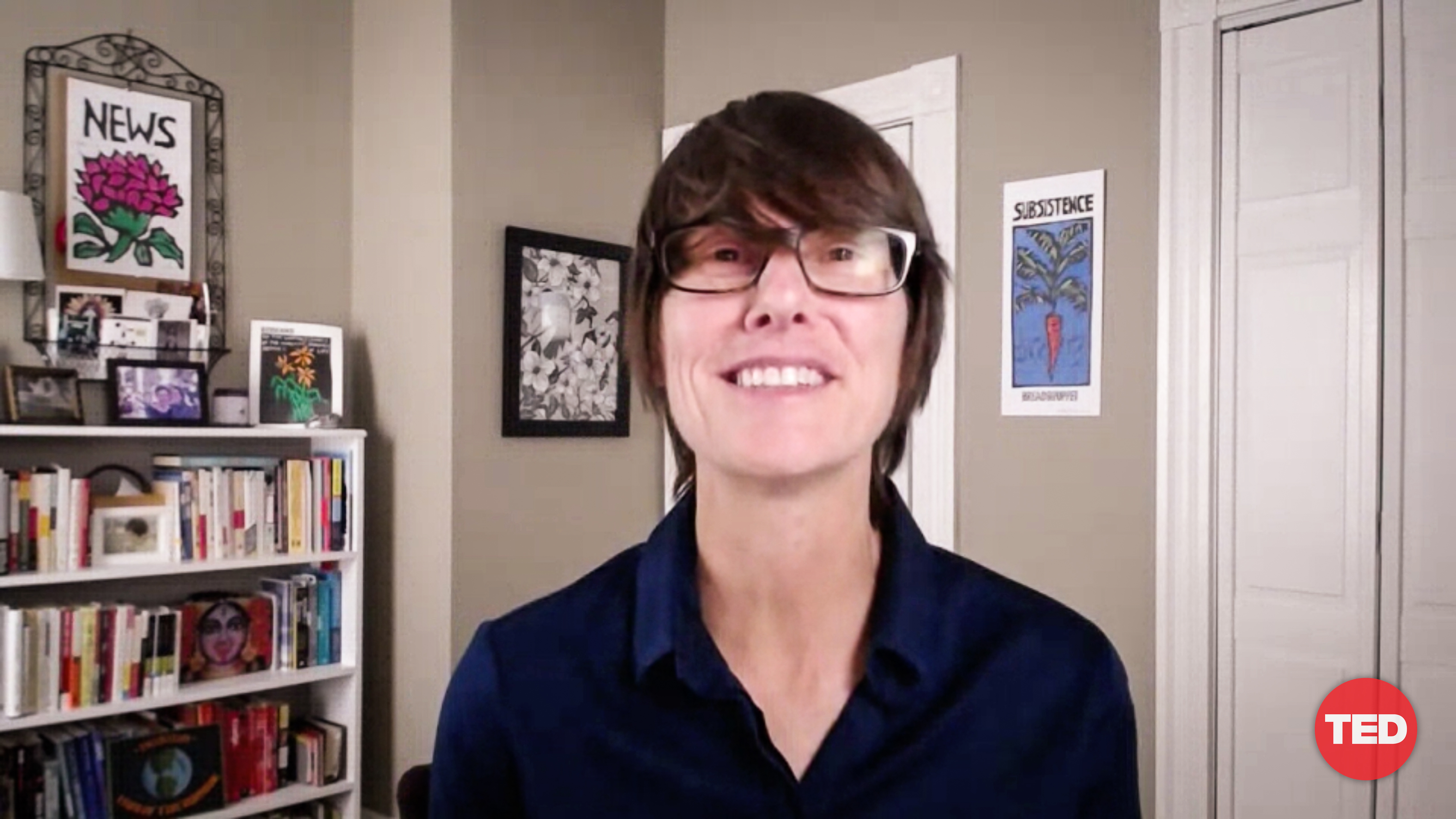
“We are living through the tech-enabled unraveling of full-time employment itself,” says anthropologist Mary L. Gray. She speaks with TED business curator Corey Hajim at TED2020: Uncharted on July 6, 2020. (Photo courtesy of TED)
Mary L. Gray, anthropologist
Big idea: AI-driven, service-on-demand companies like TaskRabbit, Amara and Amazon have built a new, invisible workforce.
How? The COVID-19 pandemic has sharply accelerated the world’s online services economy, and it’s amplifying a transition to a distributed workforce. If the thousands of jobs with no benefits, health care or safety net are any indication, society has yet to figure out how to treat the isolated human service provider, says Mary L. Gray. Over the next five years, we’ll need to fill millions of new tech jobs, most of which are built around solving the problems artificial intelligence can’t handle. How will we safeguard the new, abundant and diverse workforce that will fill these jobs, while ensuring that our changing economy is both equitable and sustainable? We often don’t value the people behind the scenes, but Gray believes it’s in society’s best interest to help workers thrive in a chaotic career landscape by providing the social services that companies don’t. “The marketplace alone can’t make the future of AI-enabled service work equitable or sustainable,” Gray says. “That’s up to us.”
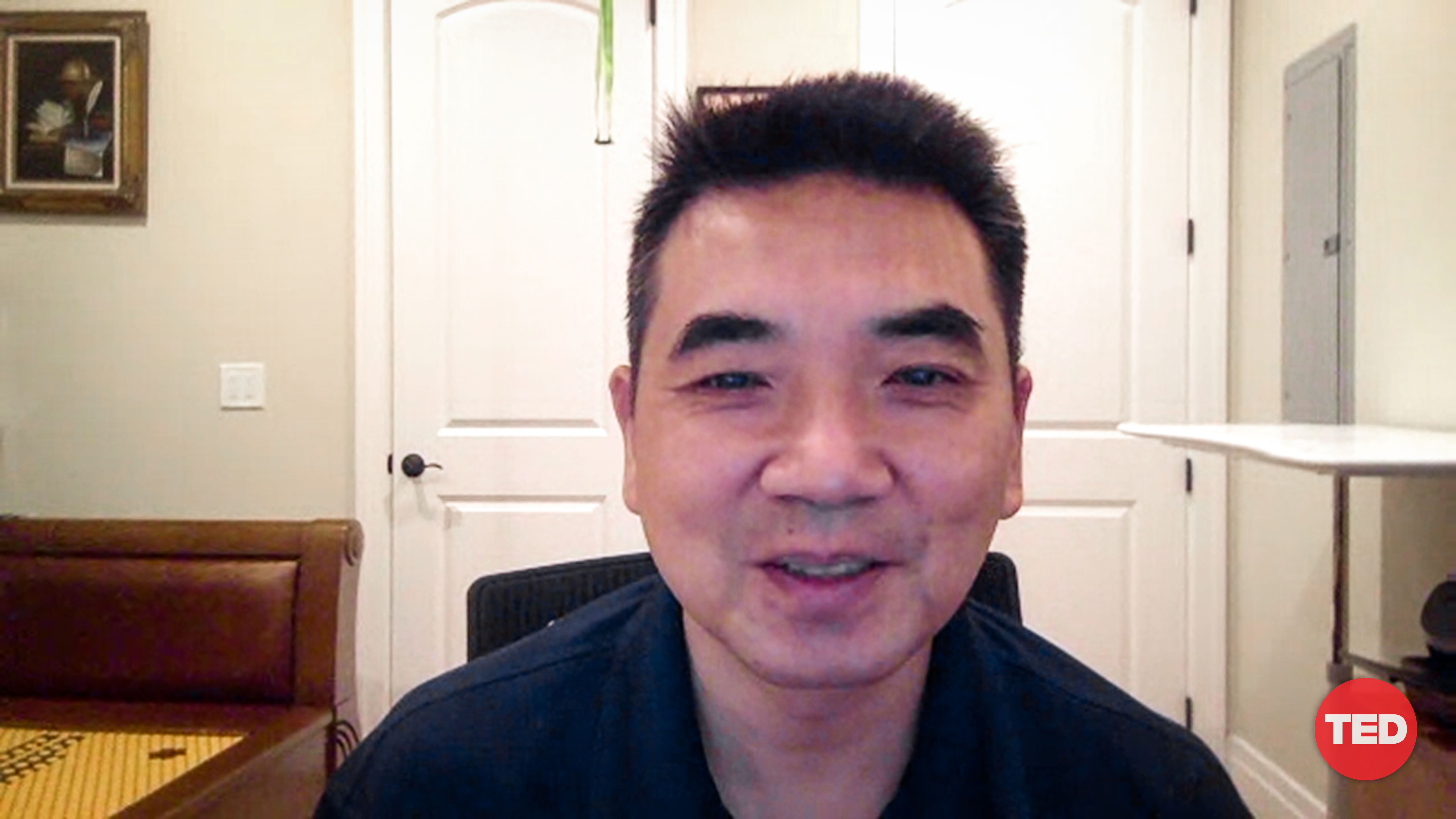
Zoom CEO Eric Yuan discusses the company’s explosive growth in conversation with TED technology curator Simone Ross at TED2020: Uncharted on July 6, 2020. (Photo courtesy of TED)
Eric Yuan, CEO, Zoom
Big idea: Although we might be physically separated by distance, we can still create connection.
How? When coronavirus hit, Zoom’s business exploded overnight. Originally built for business meetings and remote work, the software is now used by people all over the world to teach school classes, do yoga with friends and even get married. Zoom CEO Eric Yuan discusses how the company met this new demand and their plans to grow quickly, explaining how Zoom created the most popular video chat software by listening to its users and creating a product to suit their needs. He envisions a Zoom of the future that will be even more user-centric, by providing an experience that rivals face-to-face gatherings with things like digital handshakes and real-time language translations. After the pandemic, Yuan doesn’t think all business and events should be conducted over Zoom. Instead, he predicts a hybrid model where people work from home more often but still go into the office for social interaction and connection. Addressing recent security concerns, he explains that the company will design a simplified security package for first-time users to protect their privacy online. “We are going to keep working as hard as we can to make the world a better place,” he says.
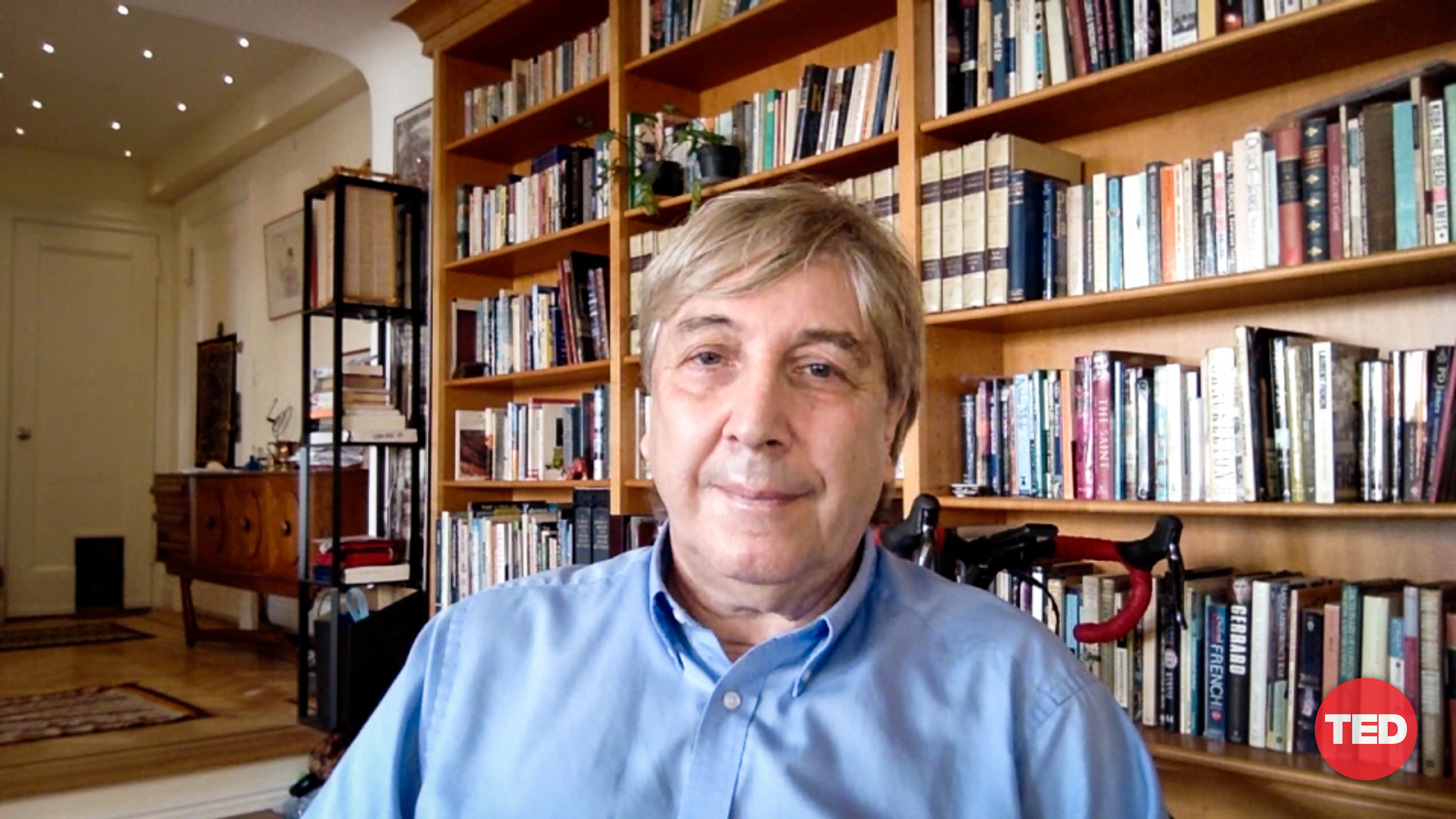
“UV is like hitting the RNA of the virus with a sledgehammer,” says radiation scientist David Brenner, discussing how far-UVC light could be used to stop the spread of SARS-CoV-2. He speaks with TED science curator David Biello at TED2020: Uncharted on July 7, 2020. (Photo courtesy of TED)
David Brenner, radiation scientist
Big idea: We can use far-UVC light to stop the spread of SARS-CoV-2, the virus responsible for COVID-19.
How? Far-UVC light is a wavelength of ultraviolet light that kills bacteria and, crucially, is safe to use around humans. Over the past five years, Brenner and colleagues have conducted studies showing that far-UVC light doesn’t penetrate human skin or eyes but does have powerful germicidal capacities, killing coronaviruses at a highly effective rate. (He first laid out that idea for us in his talk from TED2017.) His team is now testing far-UVC light against SARS-CoV-2, paving the way for a potentially game-changing tool in the fight against COVID-19 and future coronavirus pandemics. Here’s how it would work: we’d install far-UVC lights in ceilings (just like normal lights) and keep them on continuously throughout the day — in hospital waiting rooms, subways and other indoor spaces — to maintain a sterilization effect. This doesn’t mean we would stop wearing masks or social distancing, Brenner notes, but we would have a powerful new weapon against the novel coronavirus. The primary challenge now lies in ramping up production of far-UVC products, Brenner says, though he’s hopeful a plethora of them will be available by the end of the year — providing a ray of hope in these pandemic times. “UV is like hitting the RNA of the virus with a sledgehammer,” he says.
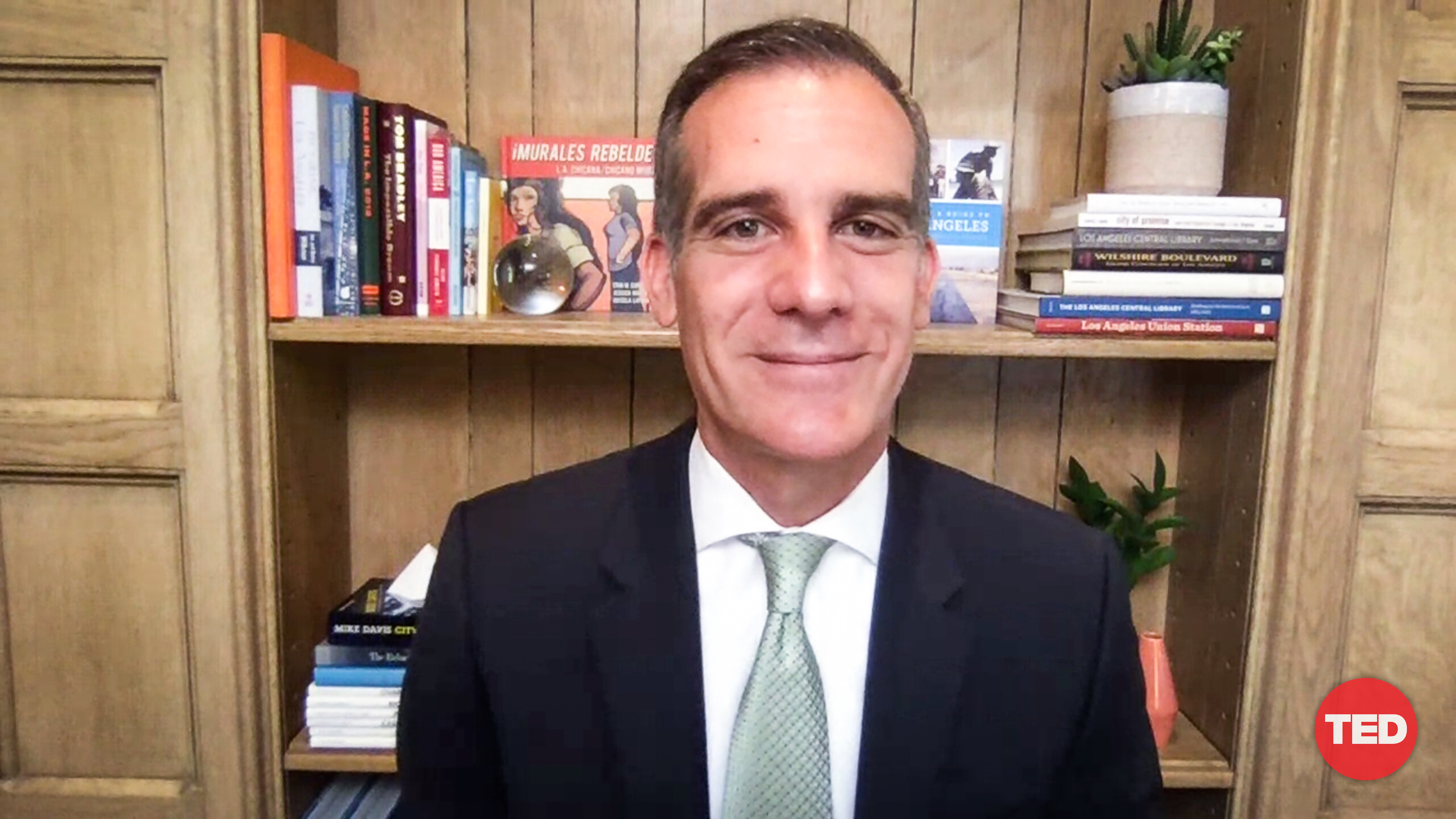
“If you change your city, you’re changing the world,” says Eric Garcetti, chair of C40 Cities and mayor of City of Los Angeles. He speaks with TED current affairs curator Whitney Pennington Rodgers at TED2020: Uncharted on July 7, 2020. (Photo courtesy of TED)
Eric Garcetti, chair of C40 Cities and mayor of City of Los Angeles
Big idea: We need to rebuild our cities to be inclusive, green and sustainable.
How? In this moment of rebuilding, Garcetti shares the tangible ways Los Angeles and other cities around the world are working towards economic and social justice and climate action while battling COVID-19. By focusing on greening infrastructure, transportation and energy production, cities are turning this moment into an opportunity. “If we don’t have a just economy, the social fabric will tear apart … whether that’s based on racial prejudice and racism that’s historic, whether it’s based on economic discrimination caste systems, whether it’s looking at the way that the economy is putting more and more wealth in the hands of fewer and fewer people,” Garcetti says. “We really see an opportunity to bring these together because the big mega industries of tomorrow are green industries.” By setting the responsibility of racial and gender equality on the shoulders of leadership, measuring progress and holding them accountable, he thinks we can create a more inclusive and prosperous future.
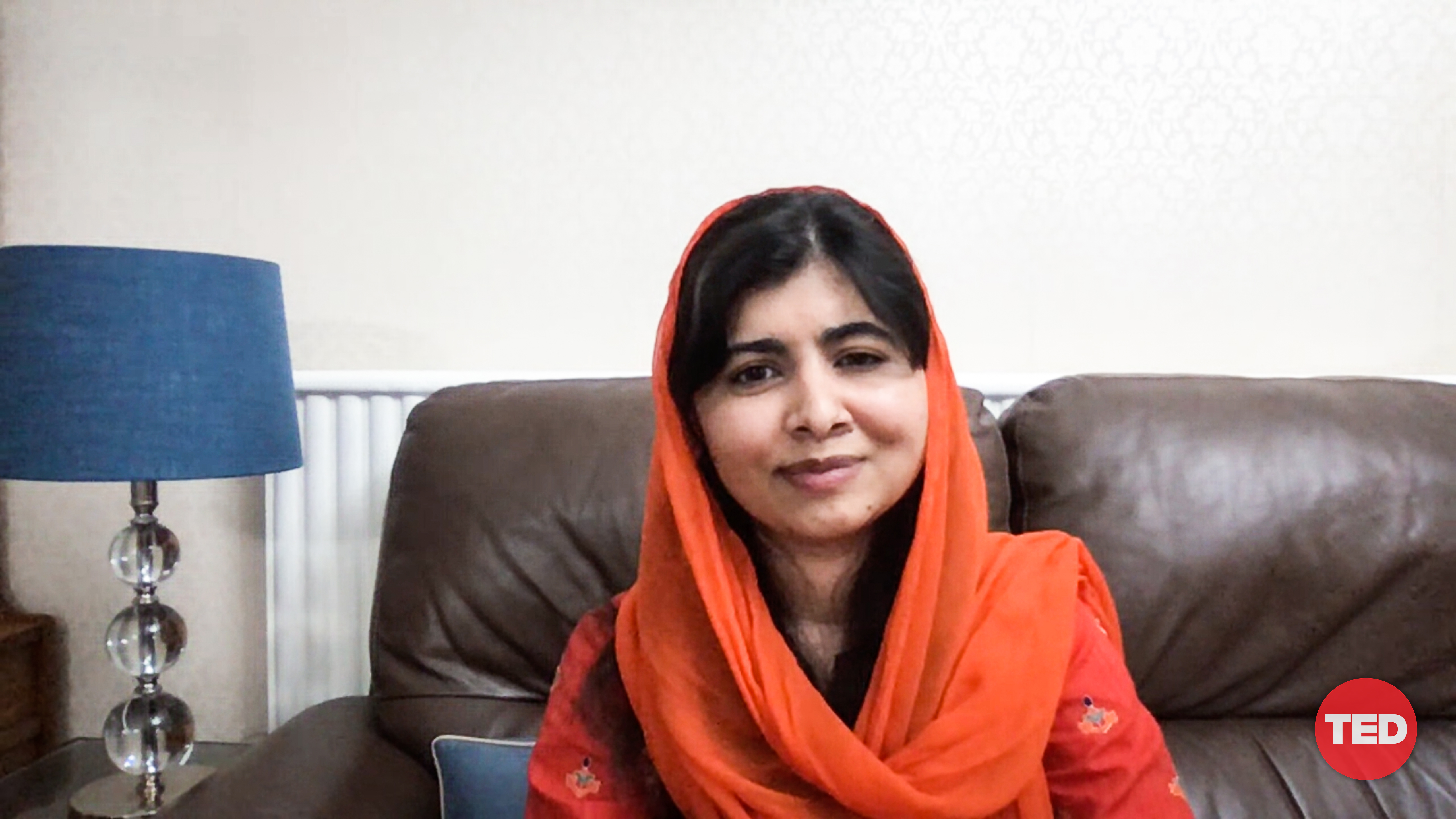
“There’s never that moment where you feel: ‘OK this the right moment to challenge the system.’ Because you might end up waiting your whole life,” says education activist Malala Yousafzai. She speaks with TED current affairs curator Whitney Pennington Rodgers at TED2020: Uncharted on July 8, 2020. (Photo courtesy of TED)
Malala Yousafzai, education activist
Big idea: In the wake of the coronavirus pandemic, things won’t be the same. But it’s an important opportunity for change — with Gen Z leading the way.
How? Let’s start with Yousafzai herself: a recent graduate of Oxford University and the youngest person to ever win a Nobel Peace Prize, whose biggest dream and current activism encompasses gender equality. Her activism is grounded in education for girls, with the hope that it transforms the world into a place where women are empowered to positively impact every corner of society. Before COVID-19 and between classes, she traveled on behalf of her organization, the Malala Fund, to help create a platform for girls to speak out and urge leaders to eradicate unfair treatment based on gender. Now she’s concerned about the many girls who will lose their access to education because of the pandemic, and she maintains that we must continue to fight for them as the world changes. She has fears just like everyone else but holds on to hope through examples of Gen Z activists and change-makers taking the lead across the world to fight for a better future for all. A few ways to help now? Support activists and organizations working in your community, organize social media campaigns and start writing letters to your political leaders demanding progress, so that you too can join in fixing what’s broken.